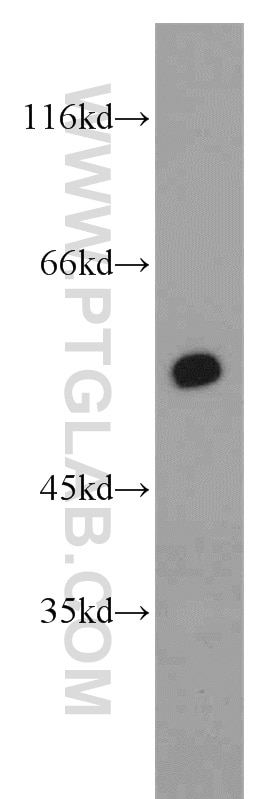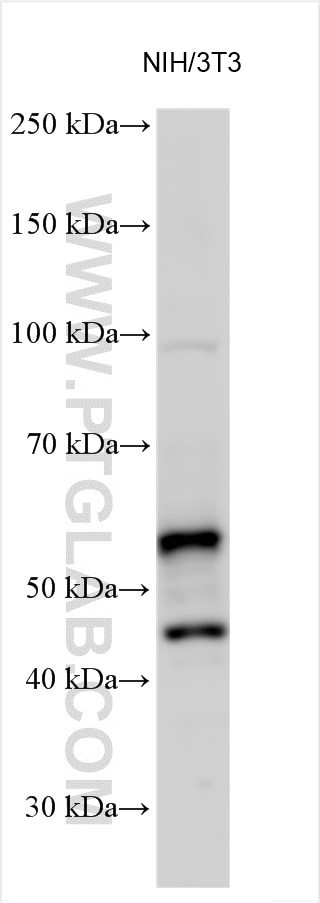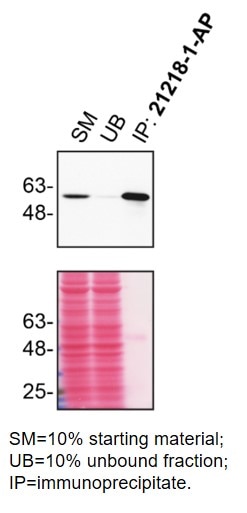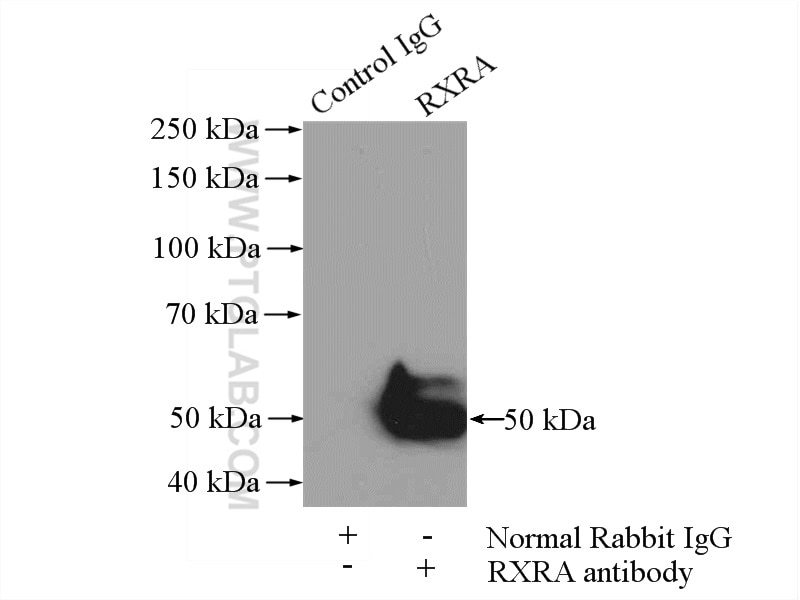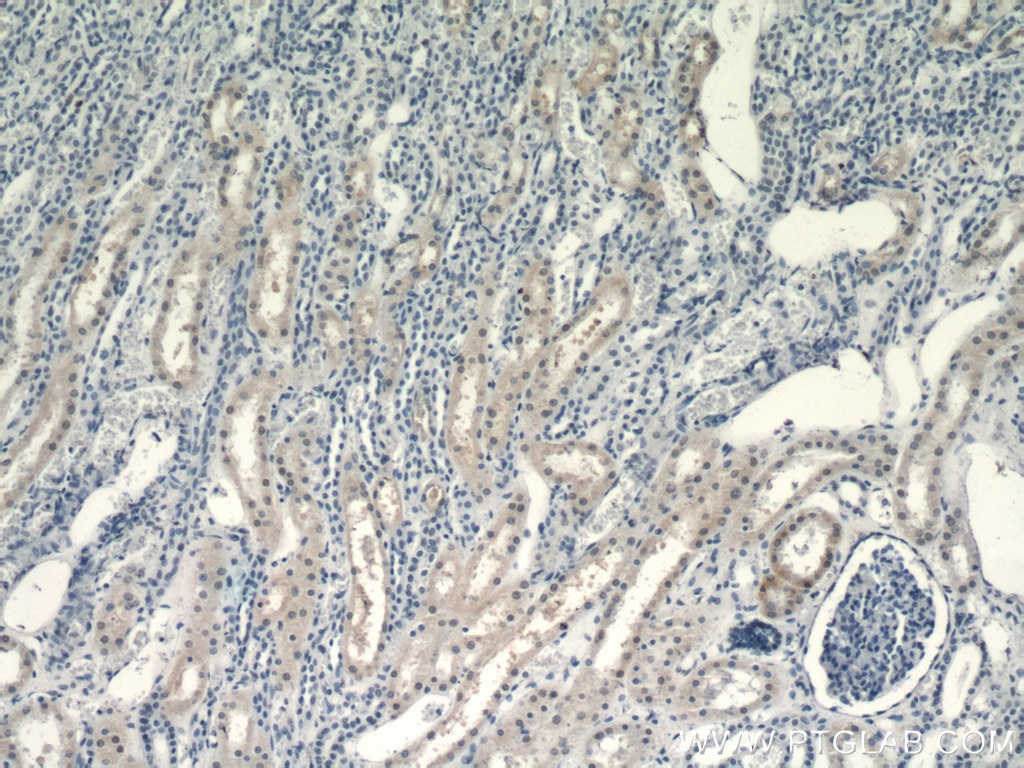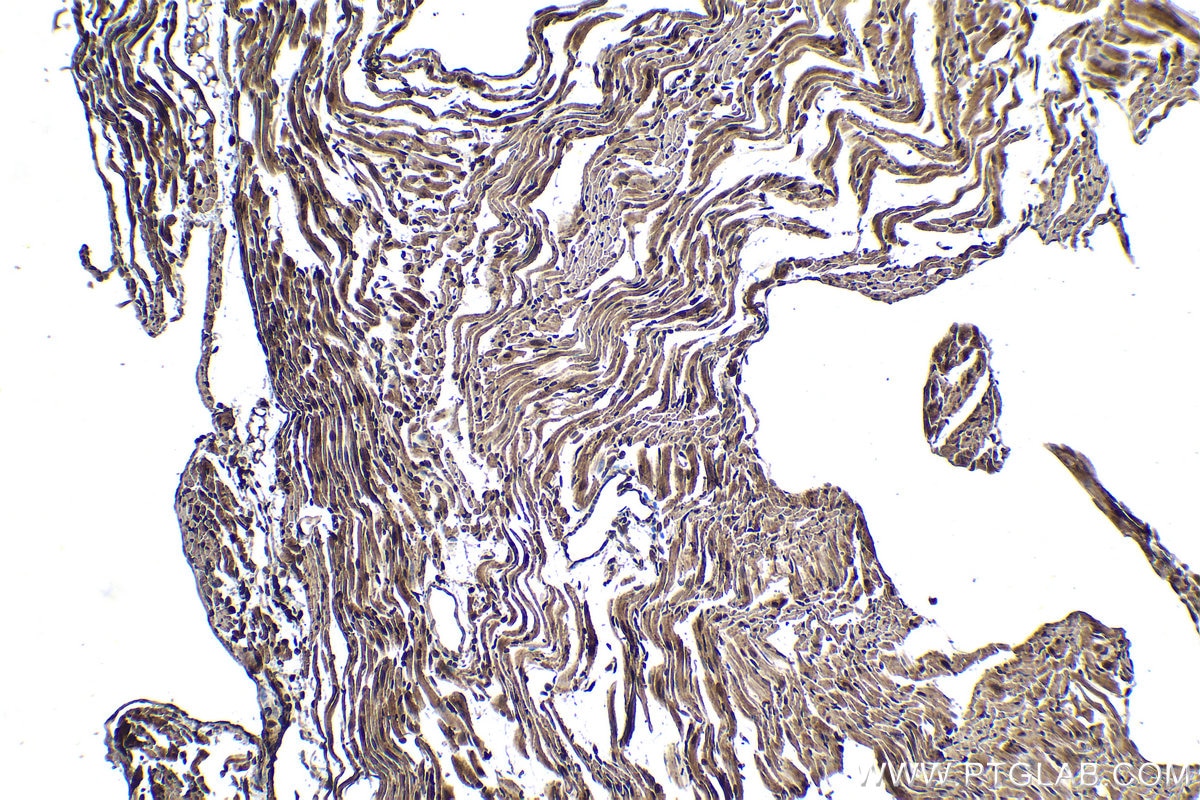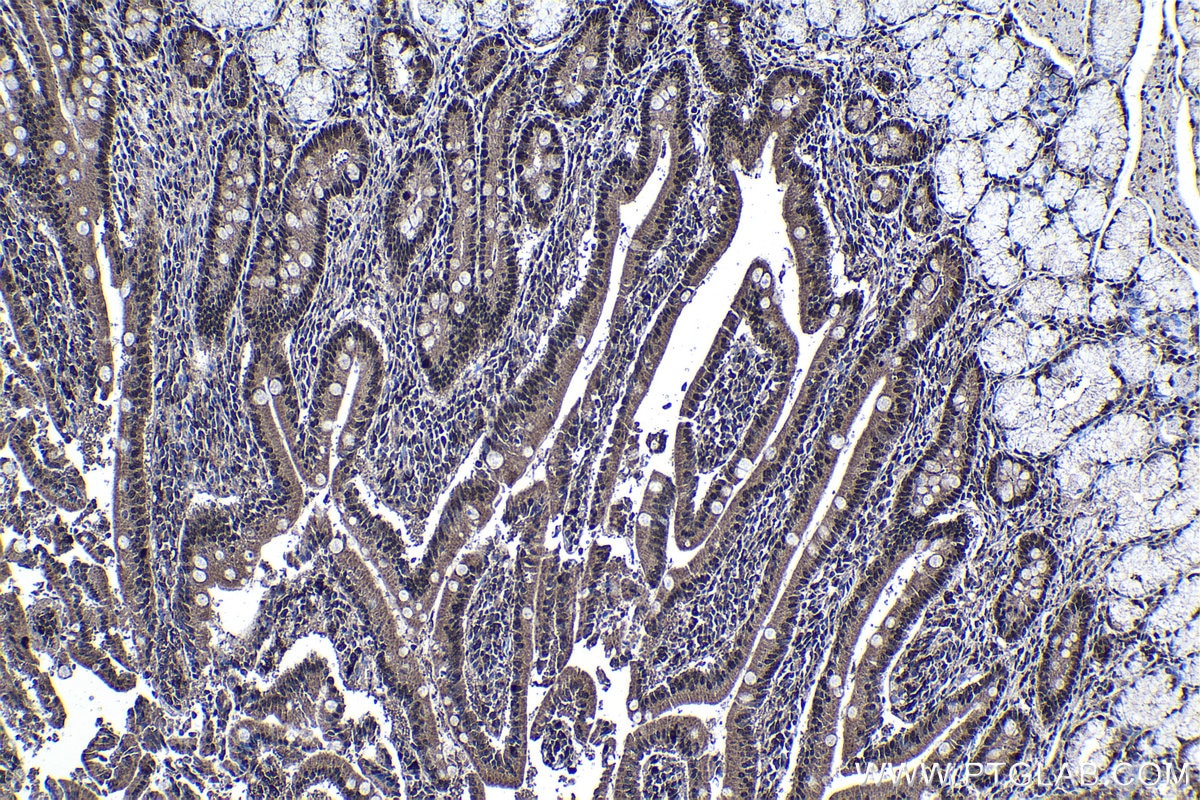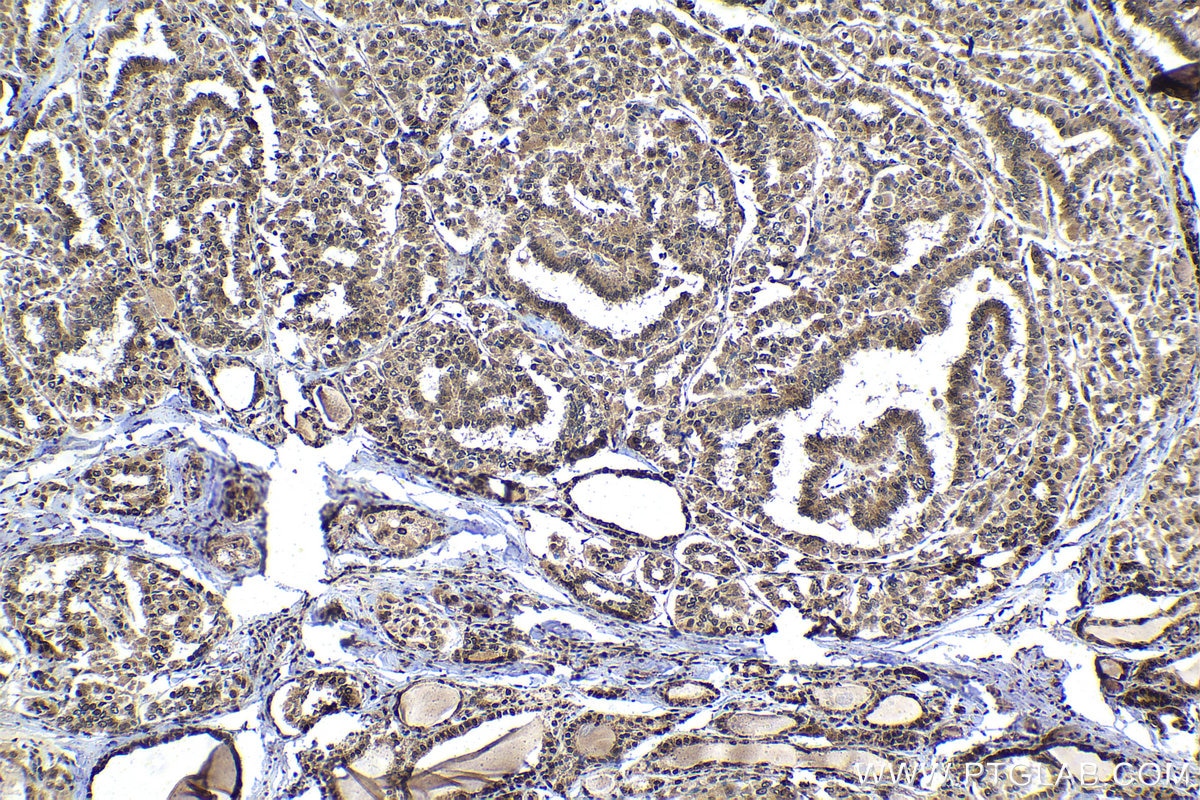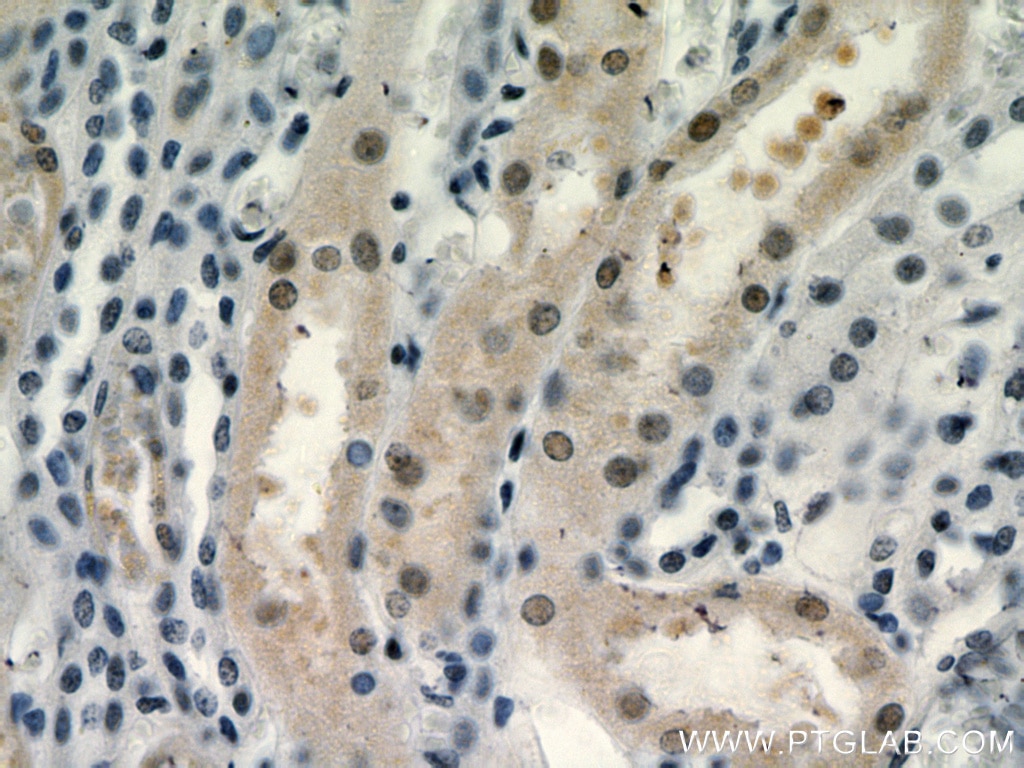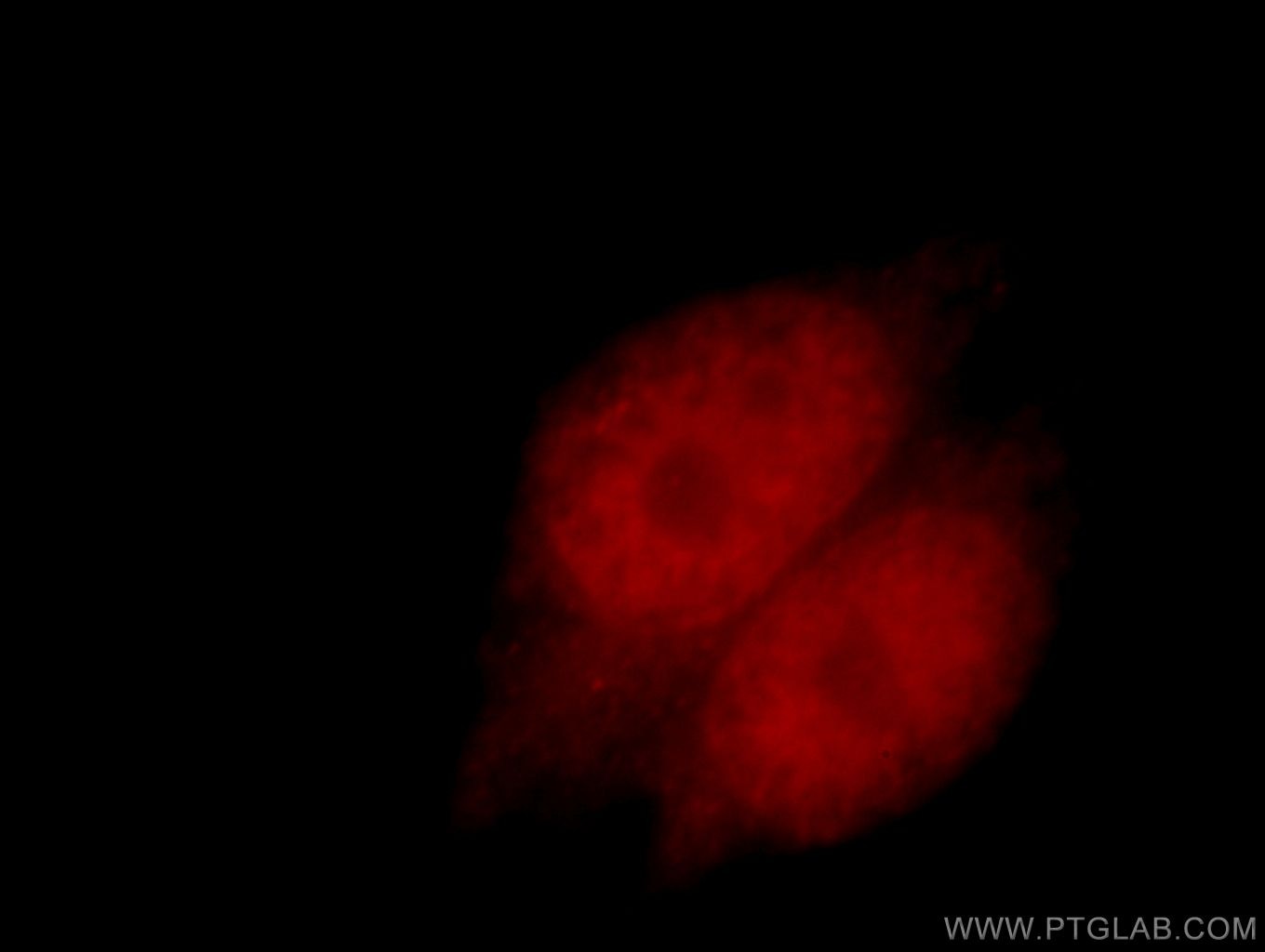- Phare
- Validé par KD/KO
Anticorps Polyclonal de lapin anti-RXRA
RXRA Polyclonal Antibody for WB, IHC, IF/ICC, IP, ELISA
Hôte / Isotype
Lapin / IgG
Réactivité testée
Humain, rat, souris et plus (3)
Applications
WB, IHC, IF/ICC, IP, CoIP, ChIP, RIP, ELISA
Conjugaison
Non conjugué
N° de cat : 21218-1-AP
Synonymes
Galerie de données de validation
Applications testées
| Résultats positifs en WB | cellules NIH/3T3, cellules MCF-7 |
| Résultats positifs en IP | cellules MCF-7, cellules HCT 116 |
| Résultats positifs en IHC | tissu rénal humain, tissu cardiaque de souris, tissu de cancer de la thyroïde humain, tissu de cancer de l'estomac humain il est suggéré de démasquer l'antigène avec un tampon de TE buffer pH 9.0; (*) À défaut, 'le démasquage de l'antigène peut être 'effectué avec un tampon citrate pH 6,0. |
| Résultats positifs en IF/ICC | cellules HeLa |
Dilution recommandée
| Application | Dilution |
|---|---|
| Western Blot (WB) | WB : 1:2000-1:12000 |
| Immunoprécipitation (IP) | IP : 0.5-4.0 ug for 1.0-3.0 mg of total protein lysate |
| Immunohistochimie (IHC) | IHC : 1:20-1:200 |
| Immunofluorescence (IF)/ICC | IF/ICC : 1:10-1:100 |
| It is recommended that this reagent should be titrated in each testing system to obtain optimal results. | |
| Sample-dependent, check data in validation data gallery | |
Informations sur le produit
21218-1-AP cible RXRA dans les applications de WB, IHC, IF/ICC, IP, CoIP, ChIP, RIP, ELISA et montre une réactivité avec des échantillons Humain, rat, souris
| Réactivité | Humain, rat, souris |
| Réactivité citée | rat, bovin, Humain, porc, souris, duck |
| Hôte / Isotype | Lapin / IgG |
| Clonalité | Polyclonal |
| Type | Anticorps |
| Immunogène | RXRA Protéine recombinante Ag15651 |
| Nom complet | retinoid X receptor, alpha |
| Masse moléculaire calculée | 462 aa, 51 kDa |
| Poids moléculaire observé | 50-54 kDa |
| Numéro d’acquisition GenBank | BC110998 |
| Symbole du gène | RXRA |
| Identification du gène (NCBI) | 6256 |
| Conjugaison | Non conjugué |
| Forme | Liquide |
| Méthode de purification | Purification par affinité contre l'antigène |
| Tampon de stockage | PBS with 0.02% sodium azide and 50% glycerol |
| Conditions de stockage | Stocker à -20°C. Stable pendant un an après l'expédition. L'aliquotage n'est pas nécessaire pour le stockage à -20oC Les 20ul contiennent 0,1% de BSA. |
Informations générales
Retinoid X receptor alpha (RXRA). Retinoic acid receptors bind as heterodimers to their target response elements in response to their ligands, all-trans or 9-cis retinoic acid, and regulate gene expression in various biological processes. The RAR/RXR heterodimers bind to the retinoic acid response elements (RARE) composed of tandem 5'-AGGTCA-3' sites known as DR1-DR5. The high-affinity ligand for RXRs is 9-cis retinoic acid. RXRA serves as a common heterodimeric partner for a number of nuclear receptors. The RXR/RAR heterodimers bind to the retinoic acid response elements (RARE) composed of tandem 5'-AGGTCA-3' sites known as DR1-DR5. In the absence of a ligand, the RXR-RAR heterodimers associate with a multiprotein complex containing transcription corepressors that induce histone acetylation, chromatin condensation, and transcriptional suppression. On ligand binding, the corepressors dissociate from the receptors and associate with the coactivators leading to transcriptional activation. The RXRA/PPARA heterodimer is required for PPARA transcriptional activity on fatty acid oxidation genes such as ACOX1 and the P450 system genes. This antibody is a rabbit polyclonal antibody raised against the 350 AA of human RXRA C-terminal. RXRA is highly expressed in the liver and also expressed in the lungs, kidneys, and heart. It can recognize the mature 54 kDa RXRA and the truncated 44 kDa RXRA (PMID: 20541701).
Protocole
| Product Specific Protocols | |
|---|---|
| WB protocol for RXRA antibody 21218-1-AP | Download protocol |
| IHC protocol for RXRA antibody 21218-1-AP | Download protocol |
| IF protocol for RXRA antibody 21218-1-AP | Download protocol |
| IP protocol for RXRA antibody 21218-1-AP | Download protocol |
| Standard Protocols | |
|---|---|
| Click here to view our Standard Protocols |
Publications
| Species | Application | Title |
|---|---|---|
Nat Genet Comprehensive characterization of protein-protein interactions perturbed by disease mutations. | ||
Sci Adv Small-molecule inhibitor targeting orphan nuclear receptor COUP-TFII for prostate cancer treatment. | ||
Redox Biol Dysfunction of astrocytic glycophagy exacerbates reperfusion injury in ischemic stroke | ||
Lab Anim (NY) Animal models of male subfertility targeted on LanCL1-regulated spermatogenic redox homeostasis. | ||
BMC Med Downregulation of AC092894.1 promotes oxaliplatin resistance in colorectal cancer via the USP3/AR/RASGRP3 axis |
